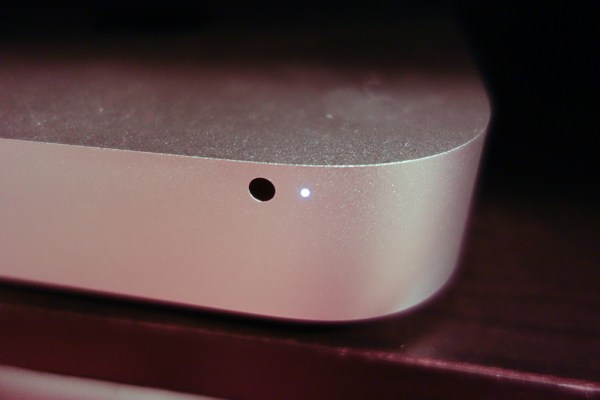Apple was granted a couple of interesting patents today (spotted by AppleInsider), including one for multitouch surfaces embedded in devices that appear and disappear as needed, as well as a new cooling apparatus design that can redirect air to where it’s needed most within a device. One is just a twist on tech Apple already uses, and the other is something that could address warm lap issues everywhere.
The first patent for “microperforation illumination” covers some designs already found in Apple’s Mac computers, specifically the sleep and power lights that glow through the aluminum casings of its computers seemingly without a dedicated opening for doing so. It describes the tech that allows for light to shine through tiny, nearly invisible holes punched in a metal surface, but expands on the concept considerably by discussing ways in which to control the resulting light, and a means through which microperforation can be combined with touch controls.
One implementation described in the patent features an Apple logo like the one found on the lid of MacBooks, except composed entirely of microperforations so that it vanishes completely when the computer is asleep or shut down. Other uses could be in interface devices like mice and keyboards, to provide key illumination in a manner more aesthetically pleasing than current keyboard backlighting or to indicated contextually relevant touch controls on an otherwise unmarked trackpad, for instance.
The other interesting patent granted to Apple today describes a “method and apparatus for cooling electronic devices,” which differs from your standard internal computer fans. It employs a solid state air moving device called an ionic wind pump that can redirect air to specific parts of a computer’s internals, using magnets to dictate the path of cool air. Internal sensors could detect exactly where cooling is needed most, and the pump system could target that area for maximum effect, reducing power demands and wear on cooling systems and computer components.
This would help with keeping noise levels down, and also Apple describes its potential for both computers and mobile devices, so it could also alleviate some of the heat issues we’ve seen users note in the past with regards to iPads and iPhones. It’s not exactly clear how this system would compare to mechanical fans in terms of physical footprint, but it could also theoretically provide a space savings advantage, crucial to Apple’s ever-slimming case designs.
How likely are these designs to make their way into shipping products? Well Apple already uses microperforation lighting effects on its hardware, so an expansion of that is definitely feasible. I find it hard to imagine the company making its iconic logo invisible when a computer isn’t in active use, but that particular use of the tech would lead to amazingly sparse industrial design, which could become iconic in itself. And alternative ways to cool computers that decrease power requirements and make those efforts more invisible to the end user definitely seems like a pursuit Apple would consider worthwhile, but it could also tackle the issue from other directions, including processor engineering. Still, compared to a lot of Apple patents, these are hardly far-fetched designs in terms of their potential for inclusion in future shipping devices.
